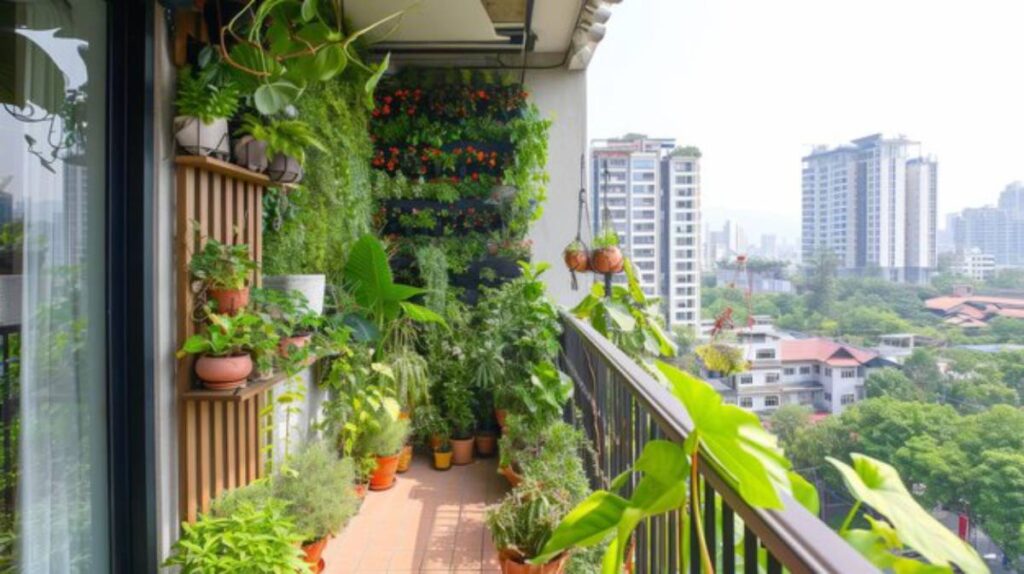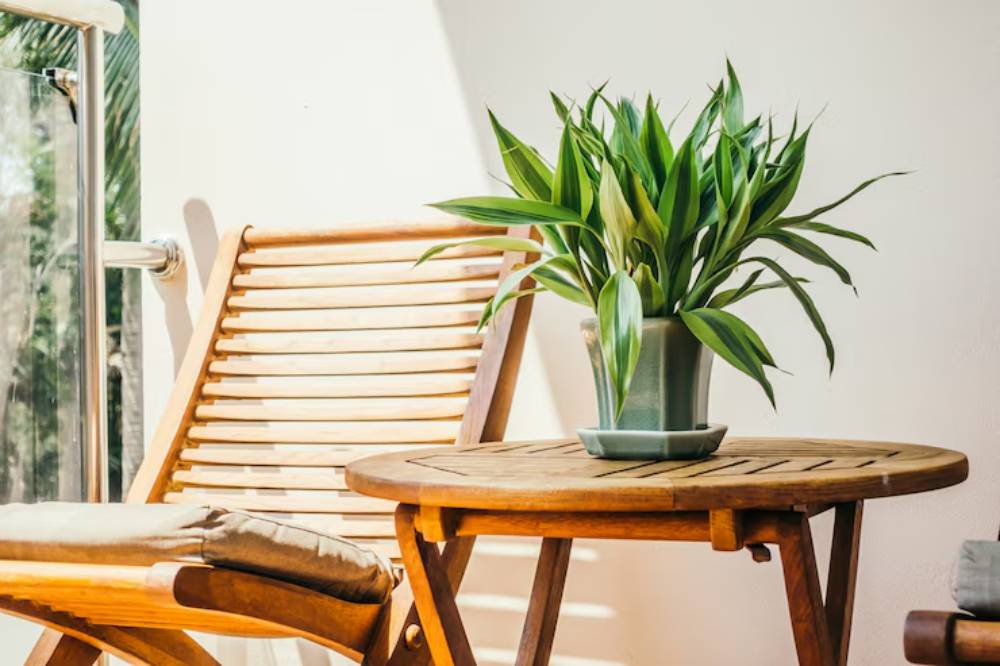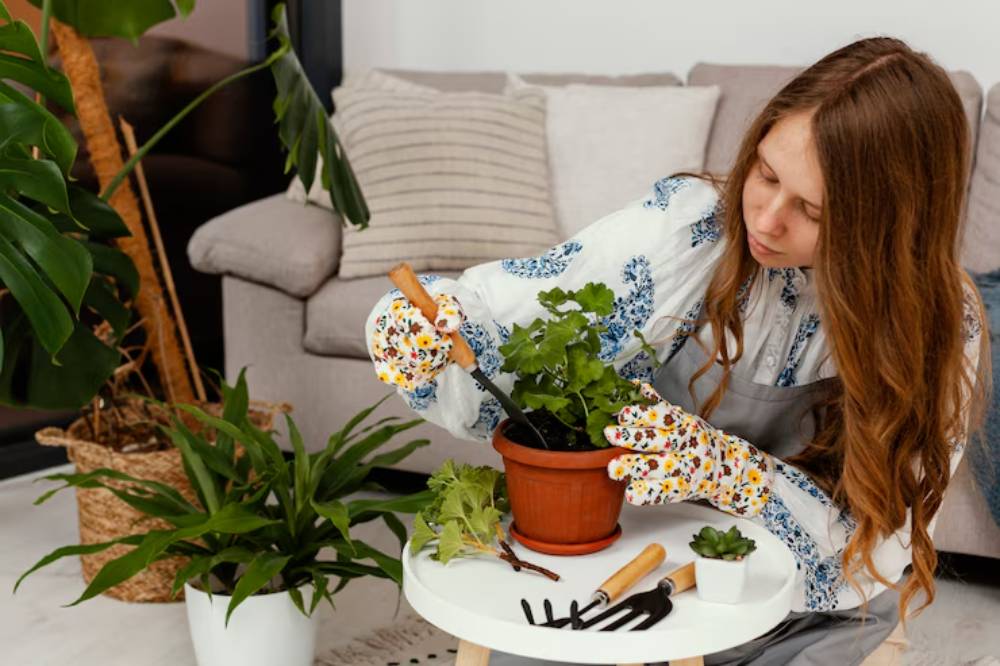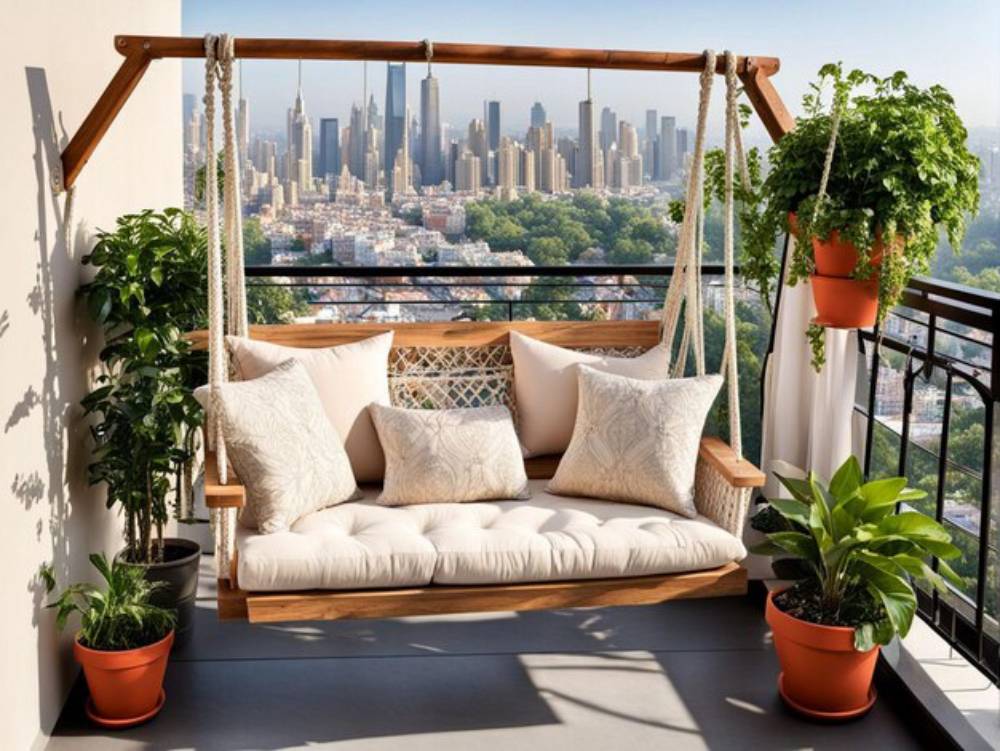The Interior Blog

Balcony-to-Bedroom: Transitioning Plants Across Spaces
Indoor plants don’t just belong in one room. They can—and should—move with you throughout your home, especially from vibrant balconies to tranquil bedrooms. If you’ve ever hesitated to shift your greenery around, you’re not alone. Many people worry about disrupting a plant’s routine or ruining a carefully styled corner. But done right, indoor plant transitions can create a cohesive, calming aesthetic and boost your home’s overall energy.
In this guide, you’ll learn how to transition plants between your balcony and bedroom, maintain their health during the move, and style them beautifully in each space. Whether you’re a plant enthusiast or a beginner craving more green vibes indoors, these practical tips and styling tricks will help you get it right.
Why Move Plants from Balcony to Bedroom?
Your plants deserve a bit of exploration—and so do you. Keeping them stuck in one space limits both their aesthetic potential and their benefit to you. Bedrooms, in particular, benefit from greenery because of their calming influence and natural air-purifying abilities.
Here are a few compelling reasons to move plants indoors from your balcony:
- Create a consistent home aesthetic that flows from outdoors to in
- Take advantage of changing light conditions throughout the seasons
- Preserve delicate plants during harsh weather (especially cold winters or hot summers)
- Enhance your bedroom’s ambience with soft, soothing greenery
- Improve indoor air quality and promote better sleep
If you’re concerned about light exposure after cleaning, explore how to choose the right indoor plants for your light conditions for proper post-cleaning placement.
Choosing the Right Plants for Indoor Transitions

Not all plants are created equal when it comes to transitioning between spaces. Some handle changes in temperature, humidity, and light better than others.
Best plants for balcony-to-bedroom transitions:
- Snake Plant (Sansevieria): Extremely adaptable, tolerates low light and irregular watering.
- Peace Lily: Great for bedrooms with indirect light, loves humidity—perfect after living outdoors.
- Spider Plant: Handles a variety of light conditions and adds a dynamic, trailing aesthetic.
- Pothos: Thrives almost anywhere and looks stunning in hanging or elevated planters.
- ZZ Plant: Nearly indestructible and adjusts well to lower-light bedroom settings.
These options are not only stylish but also forgiving, which is key if you’re experimenting with plant mobility.
Transitioning Plants the Right Way
Changing a plant’s environment can shock its system. Follow these steps to make the move gentle and successful.
1. Assess Light and Temperature Differences
Your balcony likely gets more direct sunlight than your bedroom. Identify the new light levels and adjust accordingly. Use light meters or simply observe the brightness over a day.
North-facing bedrooms typically get the least natural light, while south-facing rooms are brightest.
2. Acclimate Plants Gradually
Before moving a plant permanently, start by placing it indoors for a few hours daily. Increase the time over a week or two. This helps it adapt without going into shock.
3. Monitor Watering Needs
Balcony plants usually dry out faster due to the sun and wind. Indoors, especially in cooler rooms like bedrooms, they retain moisture longer. Adjust your watering schedule to avoid root rot.
4. Check for Pests
Outdoor conditions expose plants to bugs.
Before you move them in:
- Inspect leaves (especially undersides)
- Wipe down with a damp cloth
- Use natural pest deterrents like neem oil if needed
5. Repot If Necessary

If your plant outgrew its pot on the balcony, consider repotting before moving it indoors. Choose a container with good drainage and a style that suits your bedroom’s aesthetic.
Want help choosing a stylish pot? Read our guide on choosing the right pot size and shape for decor impact.
Creating a Green Flow from Balcony to Bedroom
Your plant’s new home should feel intentional. Here’s how to style plants so the transition feels seamless.
Use Matching Planters or Palettes
Create continuity by using the same materials or colour tones for the balcony and bedroom pots.
For example:
- Terracotta for warmth and earthiness
- Matte black for modern minimalism
- Woven baskets for boho flair
Play with Plant Heights
Use a mix of tall floor plants and smaller tabletop greenery to balance the visual weight. In the bedroom, position taller plants near mirrors or empty corners to elongate the space.
Repurpose Balcony Furniture

A plant stool or bench from your balcony can double as a bedside stand. It’s a great way to introduce plants without overcrowding surfaces.
Common Challenges and How to Fix Them
Moving your greenery isn’t without hiccups.
Here are the issues to watch for—and how to address them:
- Drooping or yellowing leaves: A sign of light shock or overwatering. Give it time to adjust and reduce watering frequency.
- Stunted growth: May indicate a lack of nutrients or insufficient light. Add a liquid houseplant fertiliser monthly and consider grow lights if needed.
- Mould on soil: Bedroom air can be stagnant. Improve airflow or use a top layer of pebbles to discourage mould.
Case Study: A Real-Life Plant Transition Story
When Anna, a freelance writer in Bristol, moved her collection of balcony plants indoors for winter, she was hesitant. “I didn’t want to ruin the vibe of my room,” she admits. But by following a simple colour palette—white pots and natural wood stands—her plants complemented her minimalist bedroom perfectly.
The spider plant now hangs near the window, the fiddle leaf fig fills an awkward corner, and her peace lily sits proudly on her desk. “It’s like my plants have new personalities,” she says. “And I’m sleeping better with them around.”
Inspired by Anna’s story? Learn more about pruning tips to keep houseplants looking their best after a transition.
Sustainable Plant Transition Practices
Being eco-conscious even with your houseplants is easier than you think.
- Use reclaimed wood or recycled pots
- Compost old soil
- Group plants by watering needs to save water
- Repurpose old shelves into plant displays
Every choice adds up, and your plants will thrive in a more sustainable home.
Final Styling Touches: Bedroom Edition
To elevate your bedroom styling with plants:
- Add ambient lighting: Place a soft-glow lamp near your plant to highlight its texture and colour at night.
- Use mirrors: Reflect greenery and create an illusion of depth.
- Incorporate scent: Mix aromatic herbs like lavender or mint with decorative plants for a multi-sensory experience.
Conclusion: Bring Nature’s Harmony from Balcony to Bed
Your home doesn’t have to draw hard lines between indoors and out. By moving your plants from the balcony to the bedroom, you’re creating a unified, peaceful environment that evolves with the seasons and supports your wellbeing.
You don’t need to be an expert stylist or a botany wizard—just a curious, attentive plant lover willing to try new things. With the right plants, tools, and mindset, your entire home can feel like a breath of fresh air.
Keeping your plants dust-free works best when they’re also potted correctly. Learn how to repot indoor plants without making a mess for a full plant care reset.
Ready to try your own indoor plant transition?
Start small—move one pot this weekend and see how it transforms your space.
Have questions or tips to share? Drop a comment or subscribe to our newsletter for more indoor styling insights.









